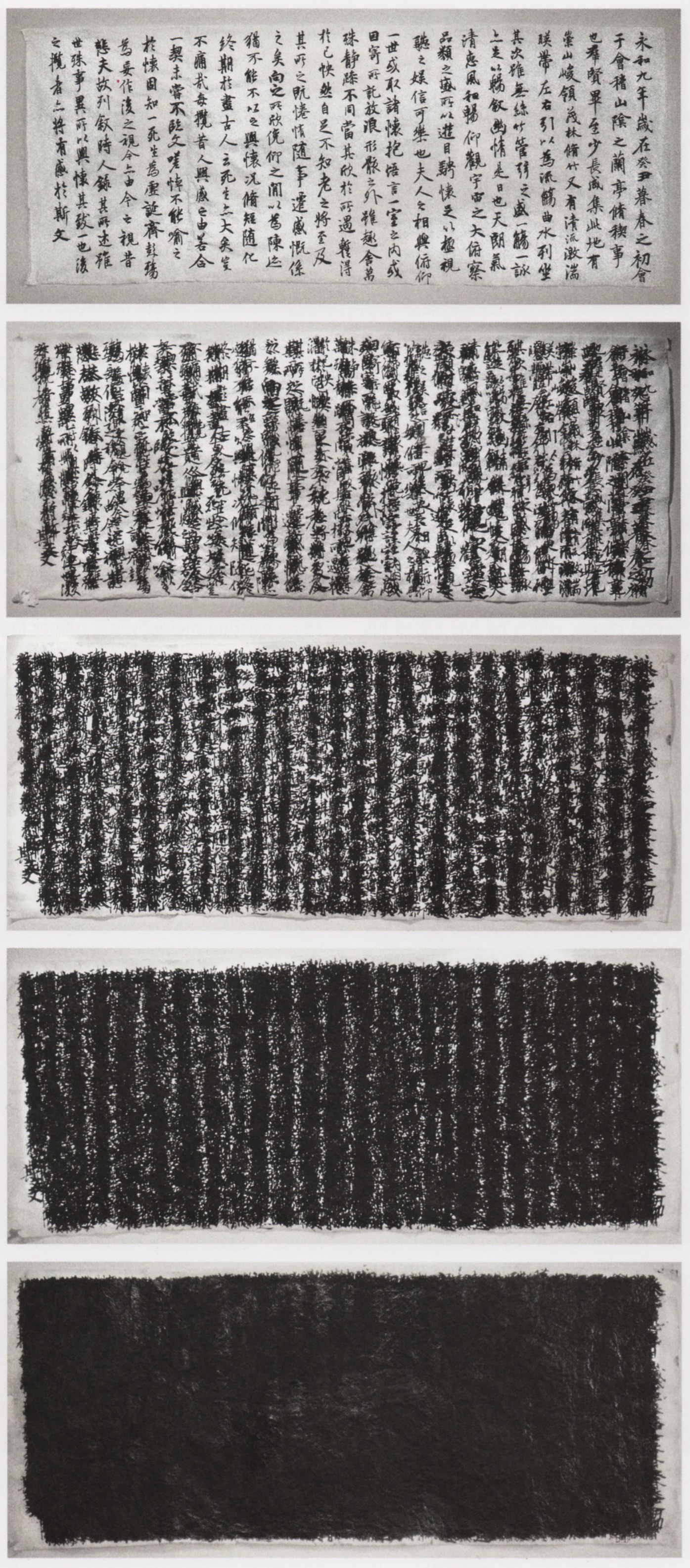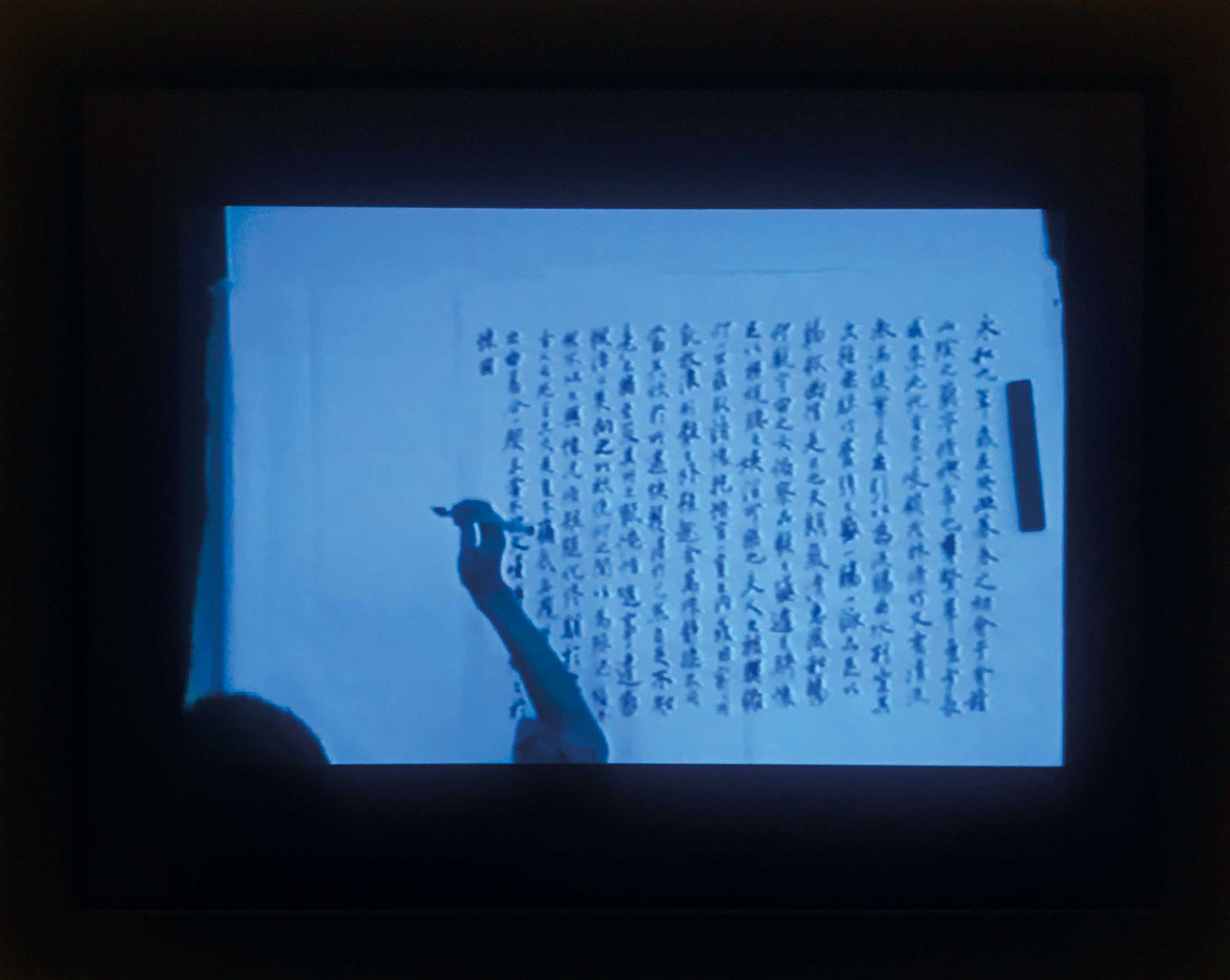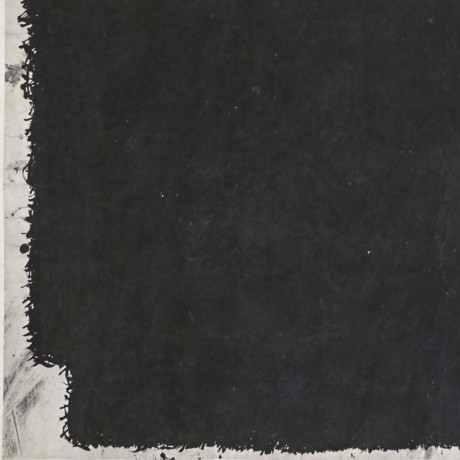
Filmed from above, a studious young Qiu Zhijie begins filling a sheet of handscroll paper with delicate letterforms. He is dutifully copying a fourth-century text called “The Orchid Pavilion Preface”, which was created by master calligrapher Wang Xizhi and is replicated for the purpose of perfecting the art of inscribing. As Qiu Zhijie moves methodically across the paper the familiar form of beautifully fluid yet perfectly regimented characters takes shape, but once he completes these ordered avenues of type, he begins again, over and over. The black ink begins to fuse, as brush marks blend in a strange tangle that at first renders the characters nonsensical, before they are obliterated all together.
The artist’s video records him undergoing this process fifty times, but he went on to complete 1000 iterations. The result is shown beside his documentary footage at the Guggenheim Bilbao
as part of Art and China After 1989: Theater of the World. This enormous show opens with a special commission from Qiu Zhijie, which illustrates his research into the sociopolitical framework and cultural history of China since the 1980s with a beautiful, exhaustive map. While this piece is given a prime location, Assignment No.1’s positioning is rather humble. It is tucked away at the back of the first gallery and could easily be missed by visitors who only give a cursory look around the temporary wall that has been erected to mount this work.

However, this small division does offer something of a sanctuary from the cacophony of installation and video works beyond. Here, the effects of the artist’s silent video are more pronounced, and there is ample time to examine the thick layers of ink that weigh down and warp the paper. The closer you look, the more these dense strokes reveal themselves, and the knitted letterforms produce a texture that seems utterly abstract and slightly sinister.
“The clarity and beauty of language is lost as new layers are formed”
When viewing this piece it is difficult not to get caught up in the notion of a meditative purpose—such is the power of cliché—due to the usual associations with the long and arduous process of learning to write Hanzi (Chinese letterforms). The thousands of characters each have their own specific stroke order, and calligraphy is considered a powerful and essential part of “high culture”. Qiu Zhijie, who practiced from an early age, has continually referenced the art form as a type of subversion. He is perhaps best-known for his Tattoo series, where he painted oversized letterforms on his body as a way of questioning suppressed individuality in China. In Assignment No.1 he undermines the original purpose of the exercise by making it absurd. It is a remark on the passive way so many of us will follow the order of things, repeat and practice and celebrate continuity at the expense of creativity and spontaneity.
The clarity and beauty of language is lost as new layers are formed, and I can’t help but feel that this is a visualization of the way we consume information in this new technological era—which was just beginning as the work was made. Qiu Zhijie’s blackened page could easily symbolize the quagmire of misinformation that fills our heads every day, and as I stare at this impossibly dense cloud of text it seems as frightening and oppressive as it is mesmerizing.
Art and China After 1989: Theater of the World
Until 23 September at Guggenheim Bilbao
VISIT WEBSITE





